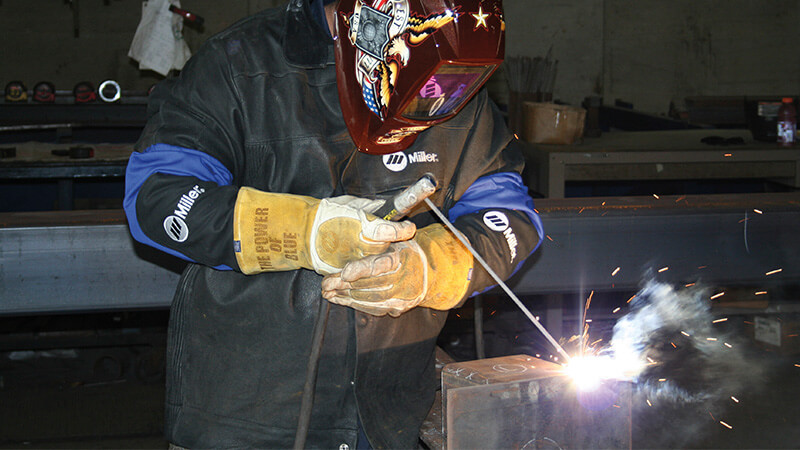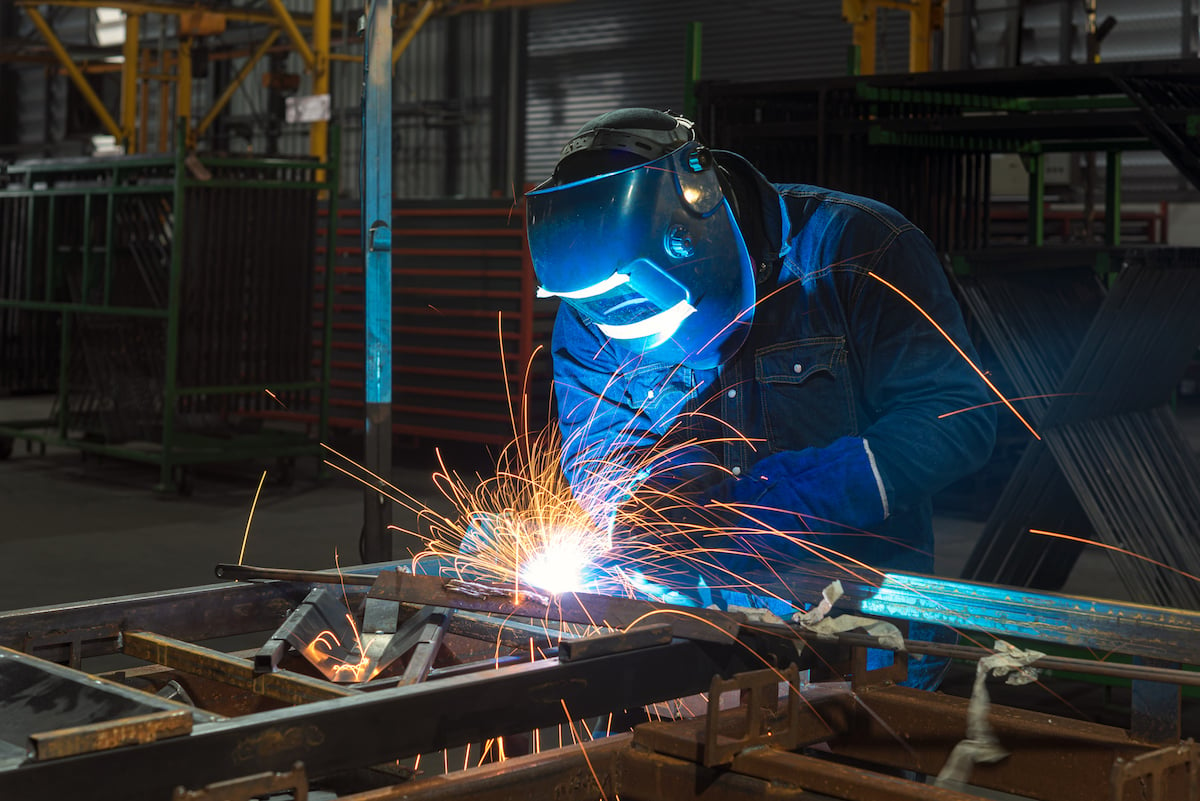Typical Welding Repair Issues and Exactly How to Address Them Efficiently
Welding repair work typically run into an array of issues that can threaten the honesty of the end product. Typical issues consist of poor infiltration, porosity, and imbalance, amongst others. Each problem provides one-of-a-kind challenges that call for specific methods for resolution. Comprehending these issues is essential for welders intending to improve their outcomes and skills. This conversation will explore these typical welding repair service problems and reliable methods to address them.
Inadequate Penetration
Poor penetration happens when the weld metal falls short to totally fuse with the base product, leading to weak joints and possible structural failures. This concern typically stems from insufficient warm input, inaccurate electrode angle, or incorrect welding rate. Welders may encounter insufficient penetration because of a miscalculation of the required specifications for a specific product density or type. Additionally, contamination on the base product's surface area can prevent effective bonding, aggravating the problem. To attend to poor penetration, welders ought to ensure appropriate settings on their equipment and keep a tidy job surface area. Regular examination of welds is recommended to identify any type of deficiencies early, allowing for timely adjustments and the prevention of jeopardized architectural stability in bonded assemblies.
Porosity
Porosity is a typical flaw in bonded joints that manifests as little gas bubbles caught within the weld metal. This problem can endanger the honesty of the weld, causing decreased strength and prospective failure under stress and anxiety. Belgrade Fabrication. Porosity commonly occurs from contamination, dampness, or improper welding methods, which permit gases to get away right into the liquified weld pool. To attend to porosity, welders must ensure appropriate surface area prep work, preserve a clean working environment, and utilize ideal welding criteria. In addition, choosing the appropriate filler material and securing gas can minimize gas entrapment. Routine examination and testing of welds can assist recognize porosity early, ensuring prompt corrective actions are taken, consequently protecting the high quality and dependability of the welded structure
Imbalance
Imbalance in welding can arise from different factors, including improper arrangement and thermal expansion. Comprehending the origin is essential for reliable resolution. Numerous improvement methods are readily available to realign parts and ensure architectural stability.
Causes of Imbalance
Welding misalignment commonly comes from a variety of underlying issues that can endanger structural stability. One primary cause is incorrect fit-up of elements before welding, which can result in spaces and irregular surface areas. Variations in thermal development throughout the welding process can additionally cause distortion, specifically if the materials being signed up with have different coefficients of expansion. Furthermore, insufficient clamping and fixturing might stop working to hold components safely in location, causing motion during welding. Poorly kept tools, consisting of welding makers and tools, might introduce variances in the weld bead, more adding to imbalance. Driver error, stemming from inadequate training or experience, can also play a significant role in creating misaligned welds.

Improvement Methods Offered
Resolving misalignment properly requires a combination of restorative methods tailored to the specific concerns available. One typical technique is making use of components or jigs to hold parts in the proper setting during welding, guaranteeing regular positioning. Furthermore, pre-heating the materials can help in reducing distortion and enhance fit-up. For considerable misalignment, mechanical adjustment techniques, such as utilizing hydraulic jacks or clamps, can be utilized to correct the setting before welding. Post-weld warm therapy might also be required to soothe stress and anxieties brought on by misalignment. Mindful evaluation and change throughout the configuration phase can avoid imbalance concerns from ending up being considerable problems, promoting a smoother welding procedure and improving total structural integrity.
Distortion
Distortion is a common challenge in welding that can occur from numerous factors, including irregular heating & cooling. Recognizing the root causes of distortion is crucial for executing reliable avoidance techniques. Addressing this issue not only improves architectural integrity however also improves the total top quality of the weld.
Root causes of Distortion
When subjected to the intense heat of welding, products frequently go through adjustments that can lead to distortion. This sensation primarily occurs from thermal growth and contraction throughout the welding procedure. As the weld location heats up, the product broadens; upon cooling, it acquires, which can develop inner stress and anxieties. Additionally, irregular home heating throughout a work surface can intensify these stress and anxieties, causing warping or bending. The sort of product also plays a substantial role; metals with varying thermal conductivity and coefficients of development might respond in different ways, bring about uncertain distortions. Moreover, inadequate joint layout and insufficient fixturing can add to imbalance throughout welding, increasing the probability of distortion. Recognizing these causes is vital for effective welding fixing and prevention strategies.
Avoidance Techniques
Effective prevention methods for distortion during welding concentrate on controlling warmth input and ensuring appropriate joint design. Preserving a constant heat input assists to reduce thermal development and contraction, which can result in distortion. Making use of techniques such as pre-heating the work surface can likewise lower the temperature level gradient, advertising uniform heating. Additionally, picking suitable joint layouts, such as T-joints or lap joints, can improve stability and reduce tension concentrations. Implementing appropriate fixturing to protect the work visit surfaces in location better help in keeping placement during the welding procedure. Ultimately, staggered welding series can distribute warmth more uniformly, preventing local distortion. By using these strategies, welders can greatly lower the chance of distortion and enhance the total top quality of their welds.
Breaking
Fracturing is a typical issue experienced in welding repair services, typically arising from numerous aspects such as incorrect cooling rates, material selection, or insufficient joint preparation. The occurrence of splits can substantially endanger the honesty of the weld, leading to possible failures during operation. To address this problem, welders should initially evaluate the root creates, making certain that materials work and properly chosen for the details application. Furthermore, controlling the cooling price during the welding process is essential; quick cooling can generate anxiety and result in cracking. Appropriate joint style and prep work likewise contribute to minimizing the threat. Implementing these methods can boost weld high quality and toughness, inevitably minimizing the possibility of cracking in ended up weldments.

Insufficient Blend
A considerable concern in welding fixings is insufficient combination, which occurs when the weld steel does not appropriately bond with the base product or previous weld passes - Montana Mobile Welding and Repair Belgrade Welding. This issue can bring about weaknesses in the joint, possibly endangering the integrity of the bonded framework. Elements adding to incomplete blend consist of insufficient heat input, inappropriate welding technique, and contamination of the surface areas being joined. To resolve this problem efficiently, welders must assure correct pre-weld cleaning and surface prep work, in addition to adjust their welding specifications to attain sufficient penetration and blend. Normal evaluation throughout the welding process can additionally help recognize insufficient fusion early, permitting timely corrective procedures to improve the general high quality of the weld
Overheating
While welding repair work can enhance structural honesty, overheating provides a significant difficulty that can bring about material deterioration. Extreme warmth throughout welding can change the mechanical homes of steels, causing minimized stamina, raised brittleness, and warping. tweco This sensation is specifically crucial in high-stress applications where architectural integrity is extremely important. Determining overheating can include aesthetic assessments for staining or distortion, along with monitoring temperature level throughout the welding process. To minimize the risks related to getting too hot, welders should utilize suitable strategies, such as controlling heat input, readjusting travel rate, and using suitable filler materials. In addition, implementing pre- and post-weld heat treatments can assist recover product residential or commercial properties and boost the overall high quality of the fixing, ensuring long-lasting performance and security.
Frequently Asked Questions
What Are the Common Indicators of a Welding Flaw?

Exactly How Can I Examine My Welds for Top quality?
To test welds for high quality, one can use visual inspections, ultrasonic screening, and radiographic techniques. Each strategy guarantees architectural honesty, identifies problems, and validates adherence to specified requirements, ultimately improving the dependability of the bonded joints.
What Security Preventative Measures Should I Take While Welding?
When welding, one should focus on safety by using suitable individual safety devices, ensuring correct air flow, safeguarding combustible materials away, keeping a clean work space, and recognizing environments to stop mishaps and injuries.
Can I Repair a Weld Without Redesigning the Entire Joint?
Repairing a weld without remodeling the whole joint is feasible, depending upon the damage (Montana Mobile Welding and Repair Belgrade). Techniques such as grinding, including filler product, or utilizing a welding process can effectively address certain imperfections while protecting the bordering structure
What Equipment Are Essential for Reliable Welding Fixes?
Important devices for effective welding repair services include a welding device, cable brush, grinder, protective equipment, clamps, and filler products. Each device plays a vital duty in making sure top quality and safety during the fixing process. site here Porosity normally emerges from contamination, dampness, or inappropriate welding techniques, which allow gases to run away into the liquified weld pool. Poorly maintained equipment, consisting of welding makers and devices, might introduce variances in the weld bead, additional contributing to imbalance. When subjected to the extreme heat of welding, materials typically undergo adjustments that can lead to distortion. Splitting is a typical issue come across in welding repair services, frequently resulting from numerous elements such as inappropriate air conditioning rates, product option, or insufficient joint preparation. A considerable problem in welding repairs is incomplete blend, which takes place when the weld steel does not properly bond with the base product or previous weld passes.